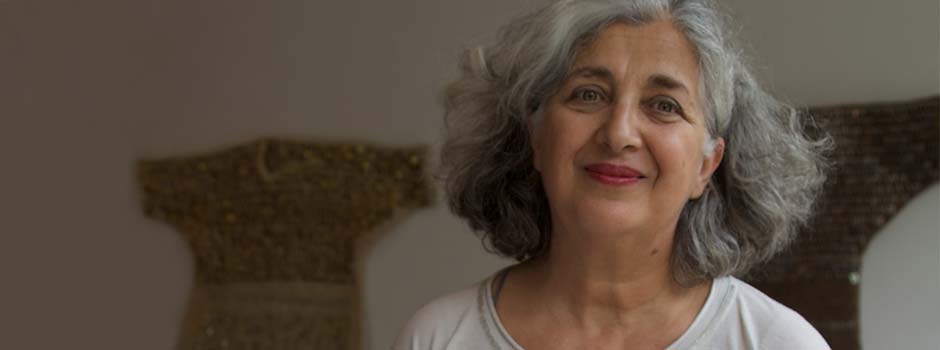
An Interview with curator and art expert Rose Issa A Pioneer of Contemporary Art from the Muslim World
Jul 29, 2012 Interview

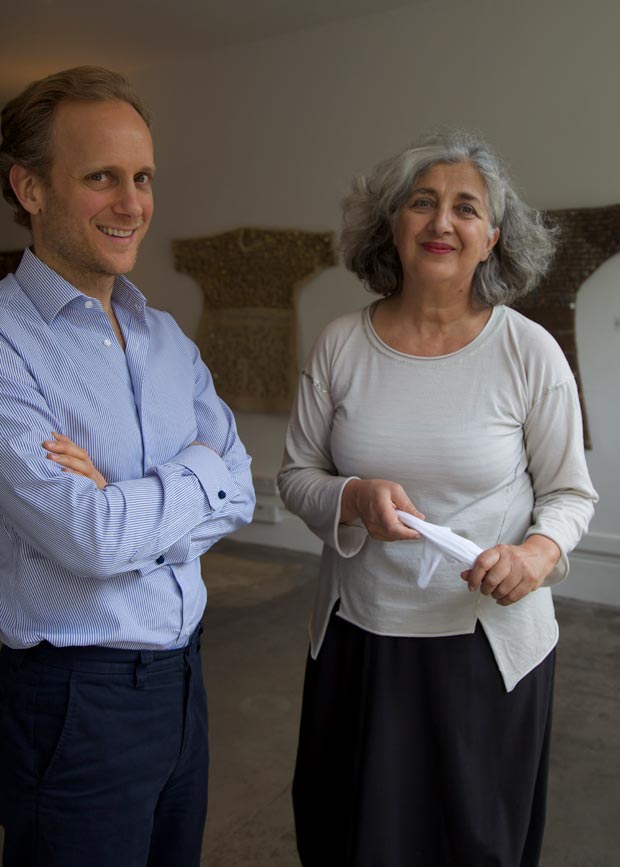 Omar Mazhar and Rose Issa / Art Dubai 2011 / Portrait by Sueraya Shaheen / © Copyright of the artist and Rose Issa Projects
Omar Mazhar and Rose Issa / Art Dubai 2011 / Portrait by Sueraya Shaheen / © Copyright of the artist and Rose Issa Projects
It all started in 1982, with the invasion of Lebanon by Israel. I happened to be in Paris, unable to return to Beirut, so I decided to launch a film festival to represent occupation, and the struggle of liberation from all around the Arab world. Most Arab embassies supported the project, so we hired a cinema and brought the film. That was a very successful event that showed that there was a need for cultural representation in the West. Our leaders did not represent us, but our artists did. Cannes film festival approached me, and a few years later, I was invited by Dr Mohamad Makiyya, an Iraqi architect, to come to London and launch the Kufa gallery in 1986, the first venue in London to promote art from the Middle East.
Most of all I wanted Arabs or Iranians to represent themselves, rather than catering to other organisers’ agendas, from orientalism to "peace" projects and collaboration with regimes -such as Israel- very few, if any, wanted to collaborate with. We have to defend our own aesthetics, concerns, and give the opportunity to the artists of our region to project in the best way possible, their own vision.
,-MIXED-MEDIA-ON-CANVAS,-170-X-260-CM,-2002.jpg) Farhad Moshiri / Ab Anar Tazeh (Fresh Pomergranate Juice), Mixed media on canvas, 170x260 cm, 2002 / © Copyright of the artist and Rose Issa Projects
Farhad Moshiri / Ab Anar Tazeh (Fresh Pomergranate Juice), Mixed media on canvas, 170x260 cm, 2002 / © Copyright of the artist and Rose Issa Projects
I have always tried to introduce artists to their collectors. However, I think an artist has a vision, a direction, that has nothing to do with curators and collectors… it may be a tiny discovery, but that discovery evolves, and we see variations on the same take, approach, angle. We discover a door and a new vision. A curator or collector can help the promotional aspect of an artist’s career, and sometime even find a better way to present his creative vision, but the idea is solely that of the artist. They are affinities of course between artists and curators, sometimes long term friendship and exchanges; otherwise both will be wasting their time.
It has to do with the joy of discovering a new vision, and wanting to share it with others. It is quite magical how suddenly you are attracted to a work, whatever it may be, film, painting, drawing, sculpture, photography; you discover something that you have never seen or felt before. And it gives you energy, an energy you want to share with people, be it through collectors, institutions, or the general public. Of course, it means it is original, unique, and for me also beautiful. I like positivity even when the work expresses something sad or tragic. In short to sum up, it comes down to quality, beauty, positivity and generosity.
,-MIRROR-MOSAIC-AND-REVERSE-GLASS-PAINTING,-200X500-CM,-2004.jpg) Monir Farmanfarmaian / Installation of seven elements (Detail), Mirror, mosaic and reverse glass painting, 200x500cm, 2004 / © Copyright of the artist and Rose Issa Projects
Monir Farmanfarmaian / Installation of seven elements (Detail), Mirror, mosaic and reverse glass painting, 200x500cm, 2004 / © Copyright of the artist and Rose Issa Projects
I was always attracted to drawings: the lines, the simplicity and modesty of some drawings which are nevertheless so powerful….
Ah, what wonderful brush strokes; again it is about the beauty of destruction and the power of art.
,-ACRYLIC-ON-PANEL-WITH-BRASS,-STEEL,-GOLD-LEAF-AND-LIGHT-BULBS,-210-X-127-X-8-CM,-2008.jpg) Ayman Baalbaki / 'Ya-Illahi' (GOD!), Acrylic on panel with brass, steel, gold leaf and light bubles, 210x127x8 cm, 2008 / © Copyright of the artist and Rose Issa Projects
Ayman Baalbaki / 'Ya-Illahi' (GOD!), Acrylic on panel with brass, steel, gold leaf and light bubles, 210x127x8 cm, 2008 / © Copyright of the artist and Rose Issa Projects
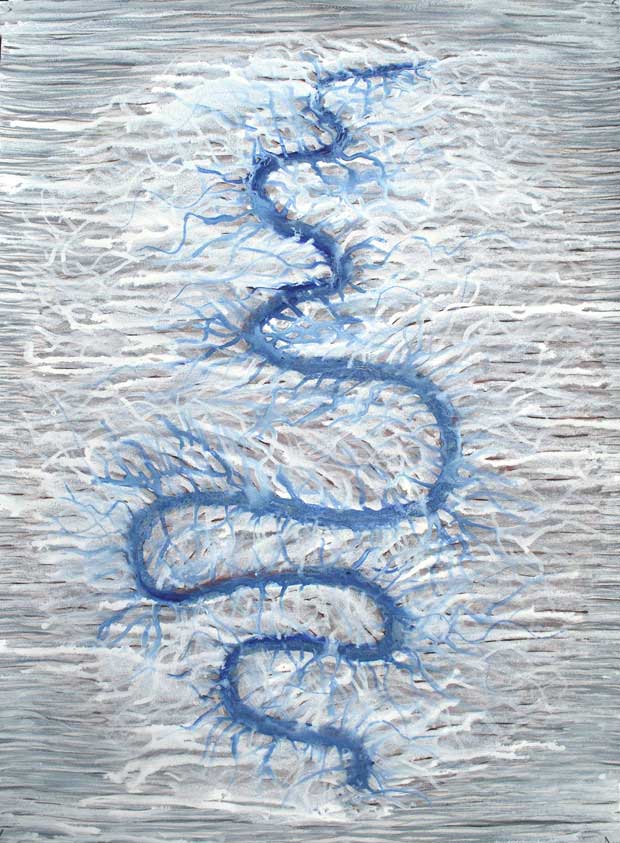 Walid Siti / From the series 'The River Ze', Acrylic and crayon on paper, 74x52cm, 2011 / © Copyright of the artist and Rose Issa Projects
Walid Siti / From the series 'The River Ze', Acrylic and crayon on paper, 74x52cm, 2011 / © Copyright of the artist and Rose Issa Projects
Leave them drawn into their tight view of the world. People who see limitations in others, usually have a lot of limitations in themselves, preconceived wrong ideas, and often no ideas whatsoever. They are trying desperately to be trendy, and what they are in fact are modern versions of limited sad academism.
The aesthetic and the morphology of the Arabic or Persian letters are so beautiful that many artists, from both East and West are attracted to them, and use calligraphy as an element to express either an idea or just bring beauty to the work. Lettrism in Europe in the 50s and 60s, all the neon works of contemporary artist Tracey Emin or the many artists who use words to make artworks are all part of this trend.
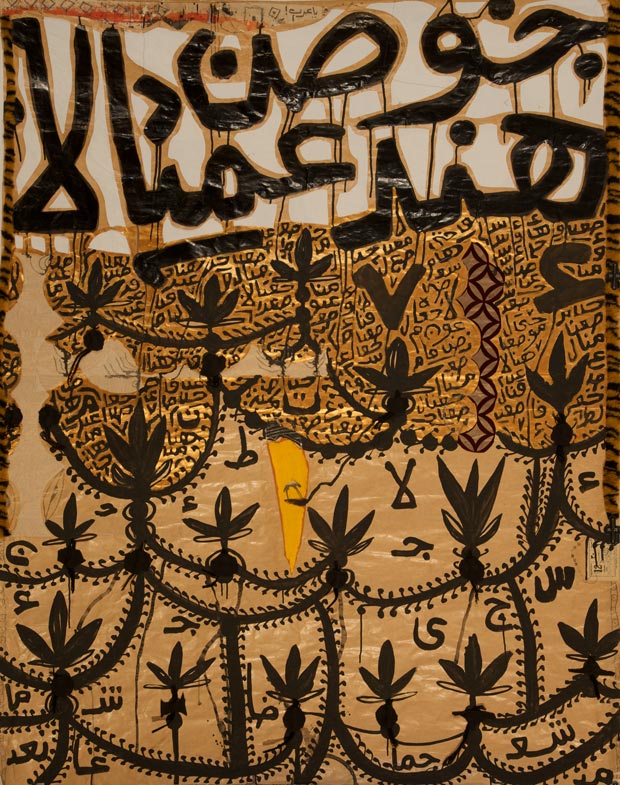 Fathi Hassan / Life, Mixed media on paper, 200x150cm, 2009 / © Copyright of the artist and Rose Issa Projects
Fathi Hassan / Life, Mixed media on paper, 200x150cm, 2009 / © Copyright of the artist and Rose Issa Projects
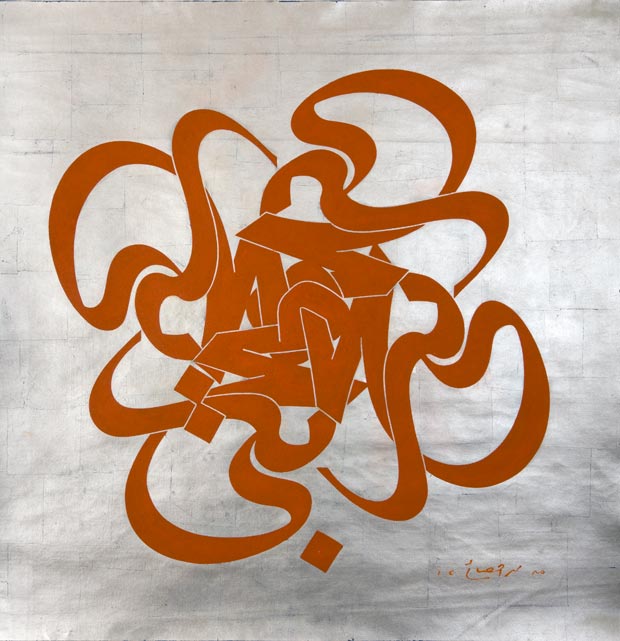 Mohammed Ehsai / 'Mohebbat', Oil on canvas, 130x130cm, 2006 / © Copyright of the artist and Rose Issa Projects
Mohammed Ehsai / 'Mohebbat', Oil on canvas, 130x130cm, 2006 / © Copyright of the artist and Rose Issa Projects
Always. Shirazeh Houshiary in London who for the last thirty years has been attracted to and inspired by Rumi and Hallaj. Y.Z. Kami in New York, is also inspired by Rumi who is a kind of best seller there in USA. We all need some spiritual energy in order to function, and poetry to inspire us in life as in art.
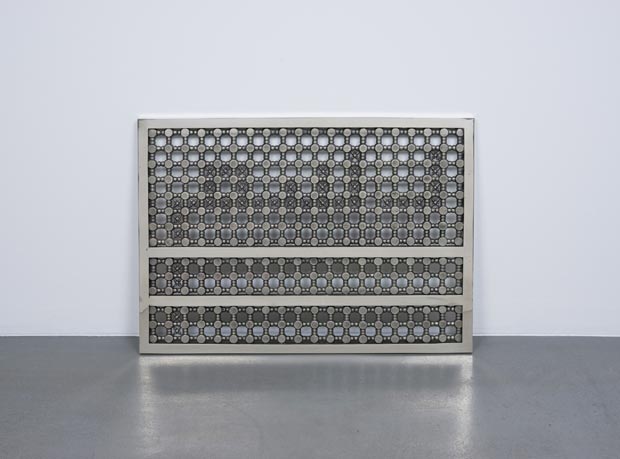 Susan Hefuna / 'Drawing', Cast bronze silver, 50x70x4 cm, 2009 / © Copyright of the artist and Rose Issa Projects
Susan Hefuna / 'Drawing', Cast bronze silver, 50x70x4 cm, 2009 / © Copyright of the artist and Rose Issa Projects
Of course, and the dialogue will go on forever between East and West, and intelligent and talented people, for they all need inspiration, from old and contemporary poets, mystics, writers, or painters. Day worked for several years on Attar and Rumi… and now is going further East for inspiration.
Yes indeed, but they are all less interested in religion than in perception - the deforming of ideas- and correction. They are interested in the personal which can be universal. Ghettos are for those who like to be imprisoned or to imprison. There is a sense of protest in many good works, against what is unjust, wrong, and misconceived.
Of course humour is very powerful as their works prove.
 Hassan Hajjaj / Nikee Rider, Edition of 10, Metallic Lambda Print, Wooden frame, Frame with papillon maches packaging 89.7x62cm, 2007 / © Copyright of the artist and Rose Issa Projects
Hassan Hajjaj / Nikee Rider, Edition of 10, Metallic Lambda Print, Wooden frame, Frame with papillon maches packaging 89.7x62cm, 2007 / © Copyright of the artist and Rose Issa Projects
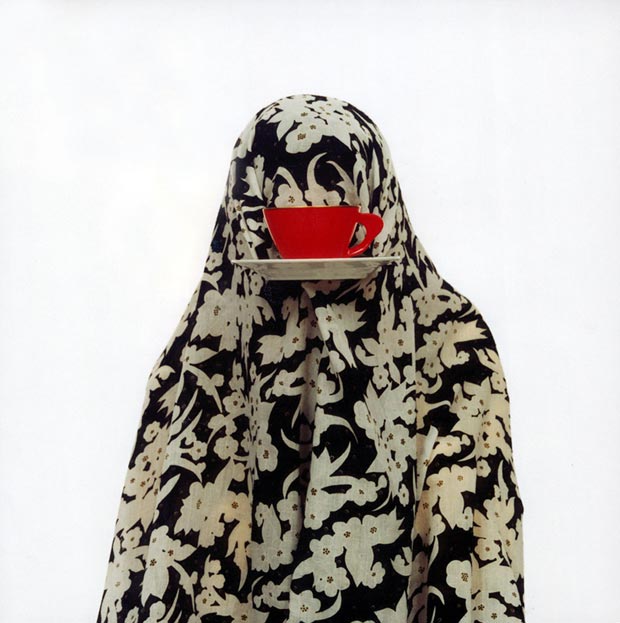 Shadi Ghadirian / 'Like everyday 1', C-PRINT, 50x50 cm, 2001-02 / © Copyright of the artist and Rose Issa Projects
Shadi Ghadirian / 'Like everyday 1', C-PRINT, 50x50 cm, 2001-02 / © Copyright of the artist and Rose Issa Projects
More exhibitions and more publications! We all want new visions, a better outlook, a better future and so the works we intend to select and show should make our life more beautiful.
Thank you. We all need people who give their moral and intellectual support to artists.
Comments
Add a comment